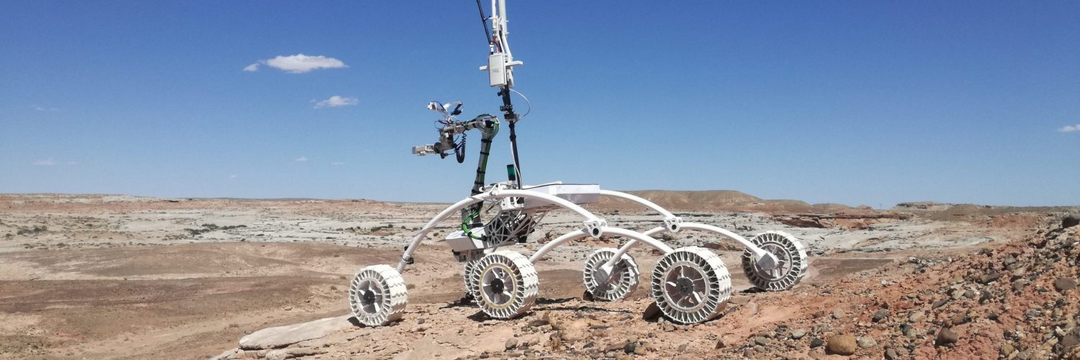Konferencja
Applications of Physics in Mechanical and Material Engineering
APMME 2022
odbyła się
23.09.2022
na Wydziałe Inżynierii Mechanicznej i Informatyki Politechniki Częstochowskiej
Organizatorzy pragną podziękować uczestnikom za wzięcie udziału w tym wydarzeniu. Gratulujemy autorom opublikowanych prac i zachęcamy do wzięcia udziału w przyszłorocznej edycji konferencji APMME 2023, która odbędzie się 29.06.2023r.
Poniżej zebrano informacje związane z konferencją.
Katedra Mechaniki i Podstaw Konstrukcji Maszyn Politechniki Częstochowskiej
ma zaszczyt zaprosić na konferencję
Applications of Physics in Mechanical and Material Engineering
APMME 2022
which will take place on
23.09.2022
in room B1 of the Faculty of Mechanical Engineering and Computer Science of the Czestochowa University of Technology
Selected conference materials will be printed in three journals.
Bulletin of the Polish Academy of Sciences: Technical Sciences, (IF, 2020: 1.662)
Acta Physica Polonica A, (IF, 2020: 0.577)
Archives of Metallurgy and Materials, (IF, 2020: 0.767)
Main Topics
- Physical and chemical properties of materials
- Condensed Matter Physics
- Applied Physics
- Vibrations and stability in physical systems
- Modelling of structural materials
- Modelling and simulation, structural optimization
- Methods and systems in machine design
- Theoretical and applied mathematics and physics in engineering
- Experimental mechanics and numerical validation
- Machine dynamics and multibody systems simulations
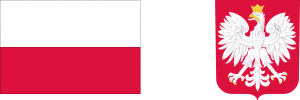
APMME 2022 Conference received funding from the state budget under the program of the Ministry of Education and Science entitled "Doskonała Nauka".
Program name: Doskonała nauka: wsparcie konferencji naukowych
Registration number: DNK/SP/514649/2021
The name of the task: Applications of Physics in Mechanical and Material Engineering APMME 2022
Co-financing value: 67 000,00 zł
Total value: 89 000,00 zł
The aim of the task is to organize the next edition of the scientific conference Applications of Physics in Mechanical and Material Engineering APMME 2022, which will enable the exchange of experiences, presentation of achievements and research results by participants. The main goal of the conference is to disseminate the latest research results and achievements of Polish scientists on the international forum. Due to the numerous participation of representatives of world science, it is an international platform for the exchange of experiences in the field of research and development and the development of international cooperation in the field of economy, science, technology and environmental protection.
Patronaty
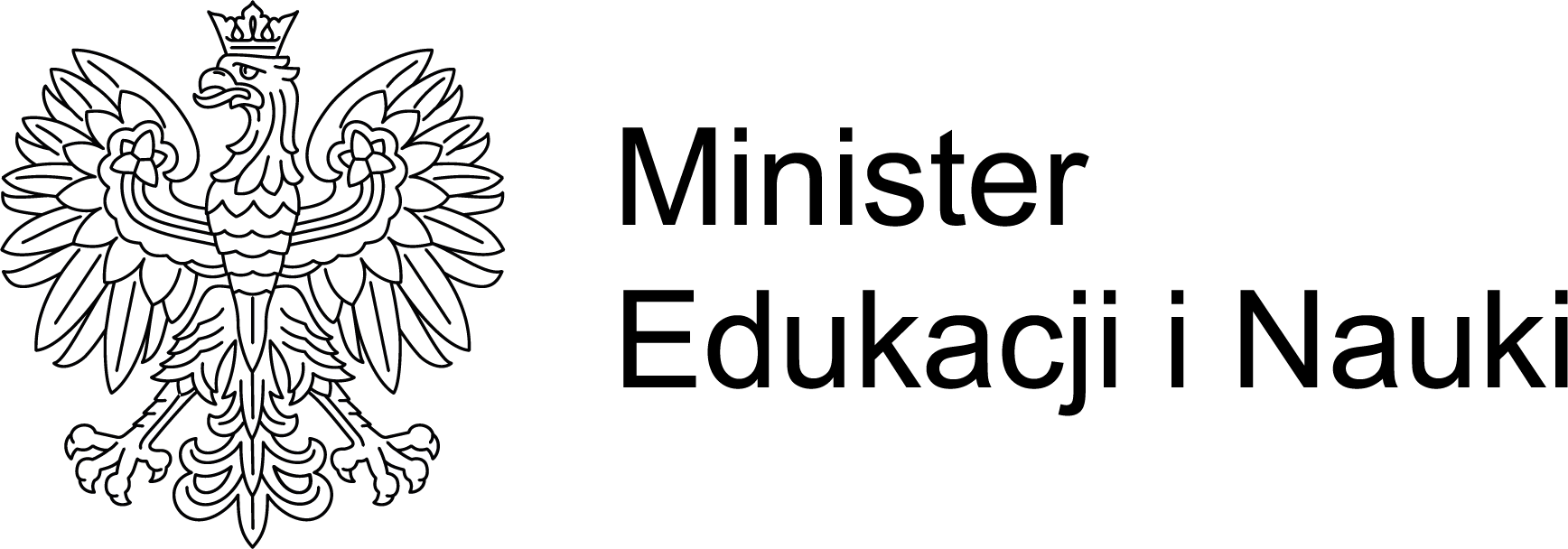

Finansowanie

Scientific Committee
Dr hab. inż. Wojciech Sochacki, prof. PCz – Chairman
Mechanical Engineering
Dr hab. inż. Janusz Szmidla, prof. PCz – Chairman
Dr hab. inż. Dawid Cekus, prof. PCz – Vice-chairman
Materials Engineering
Dr hab. Marcin Nabiałek, prof. PCz – Chairman
Prof. dr hab. inż. Jerzy J. Wysłocki Vice-chairman
Computer Science and Telecommunications
Dr hab. inż. Mariusz Kubanek, prof. PCz – Chairman
Dr hab. inż. Janusz Bobulski, prof. PCz – Vice-chairman
Associate Prof. dr. Mohd Mustafa Al Bakri Abdullah, Universiti Malaysia Perlis, MY
Doc. dr. Yilmaz Aksu, Akdeniz University Antalya, TR
Dr hab. inż. Rafał Babilas, prof. PŚ, Silesian University of Technology, PL
Prof. dr hab. inż. Jerzy Bajkowski, Polish Air Force University, PL
Dr hab. inż. Marcin Bajkowski, Warsaw University of Technology, PL
Dr hab. Piotr Bała, prof. AGH, AGH University of Science and Technology, PL
Dr hab. Katarzyna Błoch, prof. PCz, Czestochowa University of Technology, PL
Dr inż. Wojciech Borek, Silesian University of Technology, PL
Dr hab. inż. Dawid Cekus, prof. PCz, Czestochowa University of Technology, PL
Dr hab. inż. Krzysztof Chwastek, prof. PCz, Czestochowa University of Technology, PL
Dr inż. Paweł Czaja, IMIM PAN, PL
Dr hab. Grzegorz Dercz, prof. UŚ, University of Silesia, PL
Dr hab. inż. Tomasz Domański, prof. PCz, Czestochowa University of Technology, PL
Dr hab. inż. Artur Durajski, prof. PCz, Czestochowa University of Technology, PL
Dr inż. Sebastian Garus, Czestochowa University of Technology, PL
Prof. dr inż. Katarzyna Gawdzińska, Maritime University of Szczecin, PL
Dr hab. inż. Piotr Gębara, prof. PCz, Czestochowa University of Technology, PL
Dr hab. inż. Renata Gnatowska, prof. PCz, Czestochowa University of Technology, PL
Dr hab. inż. Adam Gnatowski, prof. PCz, Czestochowa University of Technology, PL
Dr hab. inż. Grzegorz Golański, prof. PCz, Czestochowa University of Technology, PL
Dr Joanna Gondro, Czestochowa University of Technology, PL
Dr inż. Roman Gozdur, Lodz University of Technology, PL
Associate Prof. dr Saeed Hasani, Yazd University, Yazd, IR
Dr inż. Marcin Jarosik, Czestochowa University of Technology, PL
Dr inż. Bartłomiej Jeż, Czestochowa University of Technology, PL
Prof. dr hab. inż. Waldemar Kaszuwara, Warsaw University of Technology, PL
Prof. dr hab. inż. Małgorzata Klimek, Czestochowa University of Technology, PL
Dr hab. inż. Marcin Kubiak, prof. PCz, Czestochowa University of Technology, PL
Dr inż. Paweł Kwiatoń, Czestochowa University of Technology, PL
Prof. dr hab. inż. Bogusław Major, member correspondence PAN, IMMS PAN, PL
Dr Angelos P. Markopoulos, National Technical University of Athens, GR
Associate Prof. Gayane Marmaryan, Armenian National Agrarian University, AR
Dr hab. inż. Grzegorz Moskal, prof. PŚ, Silesian University of Technology, PL
Dr hab. inż. Mariusz Najgebauer, prof. PCz, Czestochowa University of Technology, PL
Prof. dr hab. inż. Wiesława Piekarska, Czestochowa University of Technology, PL
Dr Paweł Pietrusiewicz, Czestochowa University of Technology, PL
Prof. dr hab. inż. Bogdan Posiadała, Czestochowa University of Technology, PL
Prof. dr hab. inż. Jacek Przybylski, Czestochowa University of Technology, PL
Dr inż. Adam Rylski, Lodz University of Technology, PL
Prof. Milan Sága, University of Žilina, SK
Associate Prof. dr Andrei Victor Sandu, Gheorghe Asachi Technical University of Iasi, RO
Associate Prof. dr Alžbeta Sapietová, University of Žilina, SK
Prof. Vitalij Savinkin, North Kazakhstan State University, KZ
Associate Prof. dr Amir Seifoddini, Yazd University, IR
Dr hab. inż. Krzysztof Sokół, prof. PCz, Czestochowa University of Technology, PL
Dr hab. inż. Marek Sroka, Silesian University of Technology, PL
Associate Prof. dr Andriana Surleva, University of Chemical Technology and Metallurgy, BG
Prof. dr hab. Radosław Szczęśniak, Czestochowa University of Technology, PL
Dr hab. Michal Šofer, VŠB – Technical University of Ostrava, CZ
Dr hab. Agata Śliwa, prof. PŚ, Silesian University of Technology, PL
Dr hab. inż. Tomasz Tański, prof. PŚ, Silesian University of Technology, PL
Prof. Eng. & Ec. Aurel Mihail Titu, Sc. D. & Ph. D., Dr. Habil., DHC, „Lucian Blaga” University of Sibiu, RO
Associate Prof. dr Laszlo Toth, Óbuda University, HU
Dr hab. inż. Sebastian Uzny, prof. PCz, Czestochowa University of Technology, PL
Prof. dr Petrică Vizureanu, Gheorghe Asachi Technical University of Iasi, RO
Dr Simon Walters, University of Brighton, Brighton, GB
Prof. dr hab. inż. Robert Zalewski, Warsaw University of Technology, PL
Prof. dr hab. inż. Adam Zieliński, Research Institute for Ferrous Metallurgy, PL
Organizing Committee
Chairman
Dr inż. Sebastian Garus
Vice-chairman
Dr hab. inż. Wojciech Sochacki, prof. PCz
Dr hab. Marcin Nabiałek, prof. PCz
Dr hab. inż. Mariusz Kubanek, Prof. PCz
OC Members
Dr inż. Paweł Kwiatoń – secretary
Dr inż. Bartłomiej Jeż
Dr inż. Anna Jurczyńska
Mgr inż. Justyna Garus
Invited guests
Keynote Speakers
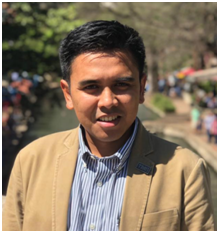
Associate Professor Ir. Dr. Mohd Arif Anuar Mohd Salleh
Centre of Excellence Geopolymer and Green Technology
Faculty of Chemical Engineering Technology,
Universiti Malaysia Perlis (UniMAP)
Malaysia
Mohd Arif Anuar Mohd Salleh (PhD) is an Associate Professor under the Materials Engineering Programme at the Faculty of Chemical Engineering Technology, Universiti Malaysia Perlis. He was graduated with B.Eng with honours in Mechanical Engineering (2006) followed by M.Eng in Mechanical Engineering majoring in Materials (2007) at the Universiti Tun Hussein Onn Malaysia. He received his PhD in 2016 from the University of Queensland, Australia in the field of Materials Engineering specifically in the development of advance solder materials. He is also a Professional Engineer and registered as a corporate member of the Institute Engineers Malaysia (IEM). He is currently the President of Tin Solder Technology Research Malaysia under the Tin Industry Board (Research and Development), Malaysia. He has experience working and lecturing in the electronic packaging materials field for more than 13 years. Before joining Universiti Malaysia Perlis he was a Failure Analysis Engineer at Intel Malaysia. He also worked as part time research officer for a few research projects on solder materials development at the University of Queensland Australia (2013-2015) and at Imperial College London (2015). He has published more than 200 publications including proceedings, journals, books and modules as the main author and co-author with H-index 18. He was conferred the Top Research Scientist Malaysia award in 2020 by Academy Science Malaysia and was one of the recipient of National Academic Awards Malaysia 2022. In addition, his passion in research has enable him to secure almost 3 million worth of research grants.
Recent Development of Solder Alloys and Microstructure Studies for Advance Electronic Interconnects
Abstract: Current rapid advancement of technology requires reliable and high performance electronic components. This includes the need of a robust electronic interconnect without the use of toxic materials following the Restriction of Hazardous Substances (RoHS) regulation. The research focuses on the development of novel lead-free solder alloys for advance electronic interconnects application. The microstructure were mainly analysed using advanced characterisation methods using synchrotron sources coupled with conventional characterisation techniques. In-situ growths of solder joint microstructures were compared where findings of controlling the microstructure and suppressing the brittle intermetallic growth were discovered.
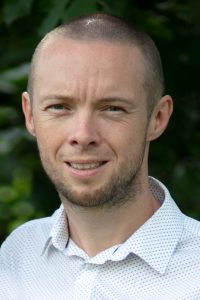
Dr. habil. Michal Šofer
Department of Applied Mechanics
Faculty of Mechanical Engineering
VSB – Technical University of Ostrava (VSB-TUO)
Czech Republic
Michal Šofer is a member of the Department of Applied Mechanics at VSB – Technical University of Ostrava, where he works on the position of Associate Professor. His research focuses on basic and applied research within the field of wave theory, guided waves, acoustic emission and structural health monitoring of composite pressure vessels. He is a member of Czech Society for Non-Destructive Testing (NDT). Within the NDT testing, he focuses on acoustic emission testing and ultrasonic testing methods, in which he holds level III certificate. He is regularly invited to implement certification courses in the acoustic emission method according to EN/ISO standards and is also appointed as the examination commissioner for the given method.
Application of b-value estimator for operational measurements of pressure equipment using acoustic emission method
Abstract: Acoustic emission is one of the non-destructive methods widely used for the inspection of pressure equipment integrity. Moreover, it is the only non-destructive method, which is capable of assessing the integrity in real time during the test procedure itself. The acoustic emission method involves two main approaches in recording and subsequent analysing of signals, namely parameter-based and signal-based method. Although today, when powerful computing technology is available, signal-based analysis is used to a greater extent, parametric-based analysis still plays an important role in certain areas. The data provided by the parametric analysis can serve as a basis for various approaches including the evaluation of the degree of structural integrity, among which we also include b-value/improved b-value analysis, based on the Gutenberg-Richter relationship. Although the given methodology is primarily used in the area of civil engineering, the presented results from laboratory tests and in-situ operational pressure tests will show its full applicability on composite as well as metallic pressure equipment.
Invited Speakers

Assoc. Prof. Dr. Rafiza Binti Abdul Razak, Malaysia
B.Eng (Civil Engineering), Msc (Structural Engineering), PhD (Materials Engineering)
Centre of Excellence Geopolymer& Green Technology (CEGeoGTech), UniMAPMalaysia
rafizarazak@unimap.edu.my
Rafiza Abd Razak is a research fellow at the Centre of Excellence Geopolymer& Green Technology (CEGeoGTech), University of Malaysia Perlis (UniMAP). She is an Associate Professor at the Faculty of Civil Engineering Technology, UniMAP. As a Fellow of the Centre of Excellence Geopolymer and Green Technology (CEGeoGTech), Universiti Malaysia Perlis (UniMAP), she has actively been promoting the projects involving producing artificial lightweight aggregate by inclusive geopolymer and utilizing recycled material to produce lightweight aggregate, funded by Ministry of Higher Education Malaysia, Fundamental Research Grant Scheme (FRGS). She has given numerous invited/keynote talks at international conferences including webinar organized by RAEng Frontiers Champion in 2021 that focus on recycled aggregate. She has also published 80 papers including an impact journal, conference and proceeding papers, book chapters, and as main author and co-author with hindex of 19; many of them are related to the field of geopolymer. She also has a granted patent in this field. She was awarded as young scientist UniMAP for two years in row (2017 and 2018) due to achievement of high publications and research awards below 40 years old. She was awarded a winner for “Double Gold Award” and “Special Recognition Award 2019” in Global Women Innovators Network Awards (GWIIN) in London, UK.
Development ofImpregnated-Palm Oil Boiler Ash (POBA) based Geopolymer Artificial Aggregate
Abstract: Artificial aggregates can be produced using industrial wastes or by-products. Solid wastes generated from the palm oil industry is a major environmental issue that require short and long term solutions. This study investigated the performance of geopolymer based palm oil boiler ash (POBA) aggregate in terms of its specific gravity, water absorption, aggregate impact value, thermal conductivity, and microscopy of aggregate through impregnation method. POBA was selected as the major precursor to synthesize the geopolymer due to its high percentages of silica oxide (SiO2) and aluminium oxide (Al2O3). The lowest specific gravity was 1.662, and all the geopolymer-based POBA aggregate had specific gravities lower than 2, and the water absorption with less that 5%. The aggregate impact value for the solid-to-liquid ratio (1.4 and 1.5), Na2SiO3-to-NaOH ratio (2.5 and 3.0), and NaOH’s concentrations (6M, 8M, 10M, 12M, 14M) are less than 30% and regarded as strong aggregates. The overall thermal conductivity obtained from the geopolymer-based POBA mortar is 0.161 – 0.243 W/m.K which classified as good thermal. The optical image of the optimum ratio of geopolymer-based POBA aggregate shows that it had a denser and complex structure, that contribute to high strength of aggregates. This finding is beneficial as alternative artificial aggregate to be applied in concrete applications.
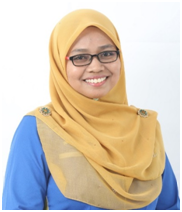
Dr Wan Mastura Wan Ibrahim
Faculty of Mechanical Engineering & Technology
Universiti Malaysia Perlis, Malaysia
wanmastura@unimap.edu.my
Dr Wan Mastura Wan Ibrahim is a research fellow at the Centre of Excellence Geopolymer & Green Technology (CEGeoGTech), University of Malaysia Perlis (UniMAP). She is also a Senior Lecturer at the Faculty of Mechanical Engineering Technology, UniMAP. She obtained her BSc. (Industrial Chemistry) from UniversitiTeknologi Malaysia (UTM), MSc (Materials Engineering) from UniversitiMalaysia Perlis (UniMAP) and PhD in Materials Engineering from UniMAP. Her research interests include geopolymer, material engineering, green technology, wastewater treatment, and construction material. She has involved with 3 patent filing and was awarded over 30 medal awards in the international exhibition. In addition, she has published 40 papers including high-impact journal papers, conference and proceeding papers, book chapters, and as main author and co-author.
The Influence of Foaming Agent towardsMetakaolin Based Alkali Activated Materials Properties And Cu2+ Adsorption
Abstract: The performance of adsorbent synthesized by alkali activation of aluminosilicate precursor metakaolin with sodium hydroxide (NaOH) and sodium silicate (Na2SiO3) as well as the foaming agent was studied for copper ions adsorption from aqueous solution. This research investigated the effect of adding hydrogen peroxide (H2O2) and aluminium powder as foaming agents to an alkali activated materials slurry. The experimental range included 0.50wt.%, 0.75wt.%, and 1.00wt.% hydrogen peroxide and 0.02wt.%, 0.04wt.%, and 0.06wt.% aluminium powder. A control sample without a foaming agent was also prepared for comparison. The specific surface area, water absorption, density, compressive strength and microstructure of metakaolin based alkali activated materials were evaluated. The adsorption capability of Cu2+ with addition of hydrogen peroxide and aluminium powder was tested. Results indicate hydrogen peroxide addition had superior pore size distribution and homogeneous porosity than aluminium powder, implying improved copper ion elimination. Cu2+ adsorption capability reached 98% with 0.75wt% hydrogen peroxide and 24.6076m2/g surface area. The results show that low cost metakaolin-based AAMs could be an effective adsorbent for high removing copper ions in waste water treatement.
Key Dates and Payment Information
The conference fee is 400 PLN or 100 EUR.
The conference fee includes, among others publication of post-conference materials in journals (after obtaining the acceptance of the abstract by the journal and positive reviews):
- Bulletin of the Polish Academy of Sciences: Technical Sciences, (IF, 2020: 1.662)
- Acta Physica Polonica A, (IF, 2020: 0.577)
- Archives of Metallurgy and Materials, (IF, 2020: 0.767)
Registration Fee
400 PLN lub 100 € — Conference registration fee
Please pay the fee to the account (after the abstracts have been approved by the organizing committee and the editors of the journal):
PL 06 1750 1211 0000 0000 0416 8728 SWIFT: PPABPLPKXXX
Bank name: BNP Paribas Bank Polska
Czestochowa University of Technology
ul. J.H. Dąbrowskiego 69
42-201 Częstochowa
please include the following details in the title of the transfer:
1.0131 APMME 2022, first name and surname of the participant (s), university (or place of employment)
Registration Fee
100 € — Conference registration fee
Payment includes:
Conference fee covers: the participation, conference materials (after obtaining the abstract’s approval and positive reviews).
Please pay the fee to the account (after the abstracts have been approved by the organizing committee and the editors of the journal):
PL 06 1750 1211 0000 0000 0416 8728
SWIFT: PPABPLPKXXX
Bank name: BNP Paribas Bank Polska
Czestochowa University of Technology
ul. J.H. Dąbrowskiego 69
42-201 Częstochowa
please include the following details in the title of the transfer:
1.0131 APMME 2022, name surname of participant (s), university (or place of employment)
Key Dates
17.04.2022
– submitting abstracts for approval by the Editorial Board of the journal Acta Physica Polonica A
15.09.2022
submission gate open in Archives of Metallurgy and Materials ; requirement: APMME 2022 application form
- 30.04.2022 06.05.2022
– full texts deadline for the journal Acta Physica Polonica A
30.04.2022
– payment deadline
15.08.2022
– full texts deadline for the journal Archives of Metallurgy and Materials
23.09.2022
– beginning of the APMME 2023
31.12.2022
– full texts deadline for the journal Bulletin of the Polish Academy of Sciences: Technical Sciences
Scientific Program
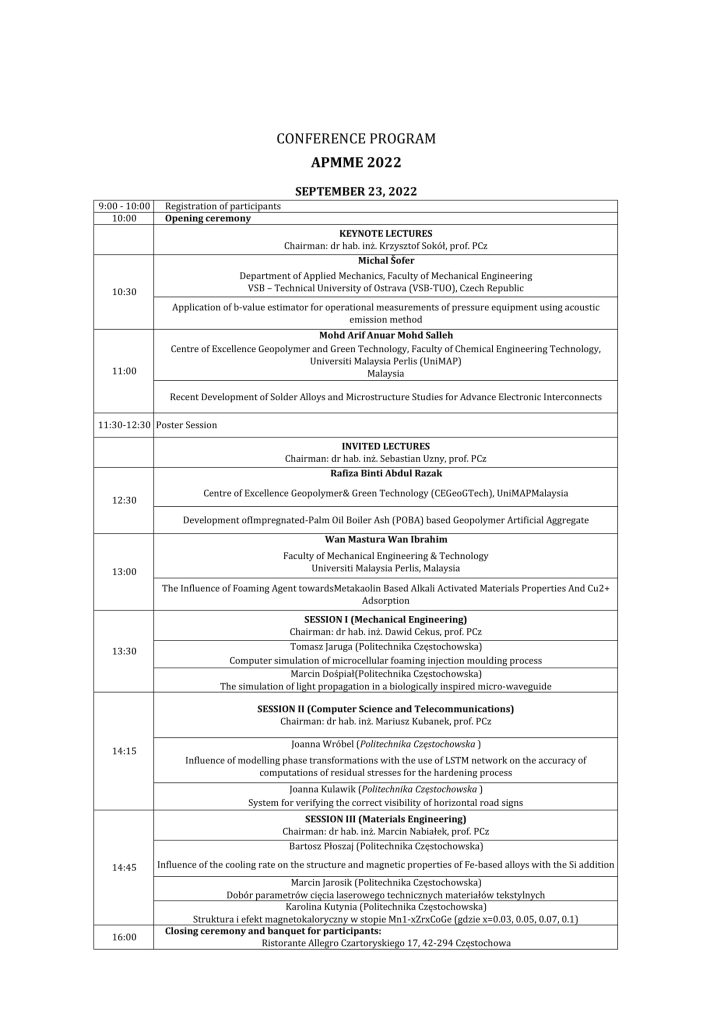
Acta Physica Polonica A
Abstracts for approval, as well as willingness to participate in the conference, should be submitted via application form on the website .
If you have any questions, please contact us on the conference e-mail: conf@apmme.pl
A printout of the submitted papers, which will receive abstract approval from the editorial office of the journal, and then positive reviews, is planned for July 2022.
By submitting the application, you accept the Regulations
It is planned to print conference materials (after the abstracts are approved by the Organizing Committee and the Editorial Board of the Journal, and then positive reviews of the full texts of the papers are obtained) in the journal Acta Physica Polonica A (IF: 0.545).
Files
Conference Regulations APMME 2022
Acta Physica Polonica A: Guide for Authors
Article template (Acta Physica Polonica A)
GDPR
Copyright transfer form: Acta Physica Polonica A
Accepted abstracts
- Analysis of physical and structural properties during modelling of the heating and cooling process of the steel ring
Tomasz Domański, Wiesława Piekarska, Marcin Kubiak, Zbigniew Saternus - Analysis of hardening area of the material with variable parameters of laser beam cutting
Zbigniew Saternus, Wiesława Piekarska, Tomasz Domański, Marcin Kubiak - Heating temperature and changes in the physical and structural properties of polymeric materials
Aleksandra Kalwik - Modelling of phase transformations in solid state and dilatometric curves using interpolation methods to determine CCT diagrams
Marcin Kubiak, Wiesława Piekarska, Tomasz Domański, Zbigniew Saternus - Numerical modelling of microcellular foaming injection moulding
Jacek Nabiałek, Tomasz Jaruga - Effect of Various Conductive Filler Additions on the Percolation Threshold of LLDPE Conductive Polymer Composite
F. Badrul, K.A. Abdul Halim, M.A.A. Mohd Salleh, A.F Osman, M.F Omar, M.S Zakaria, B. Jeż, M. Nabiałek - Microstructure and High Temperature Oxidation of Modified Ductile Ni-Resist Alloy with Higher Manganese Content
M. Mohd Rashidi, Mohd Hasbullah Idris, Z. Shayfull, Asnul Hadi Ahmad, MMA Abdullah, P. Pietrusiewicz, M. Nabiałek, J. Garus - Microstructural Study on Ag/TiO2 Thin Film
K. Abdul Razak, D. S.CheHalin, AzlizaAzani, M. M. A.B. Abdullah, M. A. A. Mohd Salleh, N. Mahmed, V. Chobpattana, L. Kaczmarek, A.V. Sandu, S. Garus - Synthesis of Zn/TiO2 Thin Films for Self-Cleaning applications
D.S.C. Halin, A.S.Z. Abidin, A. Azani, M.A.A. Mohd Salleh, K.A. Razak, M.M.A.B. Abdullah, M.M. Ramli, A.V. Sandu, P. Vizureanu, L. Kaczmarek, S. Garus, J. Garus - Lithography-Based Surface Modification of Copper Substrate for Soldering Application
N.A.H.M. Mahayuddin, J.A.Wahab, M.A.A.M. Salleh, M.F.M. Nazeri, P. Postawa, M. Nabiałek, B. Jeż, J. Garus - Simulation of the impact of bulk selenium composition variation in CIGSSe solar cell
G.M. Albalawneh, M.M. Ramli, M.Z.M. Zain, Z. Sauli, M. Nabiałek, K. Jeż - Chitosan Graphene Oxide (CH/GO) Composite Film for Adsorption of Cu2+ Ions
M. A. H. M. A. Majid, N. H. Osman, N. Tamchek, M. M.Ramli, N. A. A. Sukri, H. I. Mazlan, N.N. Mazu, A. Idris, K. Błoch, J. Gondro - Graphene Oxide Production via exfoliation process of Low-Temperature Synthetic Graphite from Oil Palm Trunk Waste
N.A. Karim, Muhammad M. Ramli, C. M. R Ghazali , M.M.A. Abdullah, D. Darminto, B. Jeż, M. Nabiałek - Influence of aluminum oxide on the formation of casting defects during the solidification process of CuAl10Fe3Mn2 alloy
Paweł Kwiatoń, Dawid Cekus, Maciej Nadolski, Krzysztof Sokół, Zbigniew Saternus, Pavel Pavlíček - The use of Lagrange multiplier formalism to solve the problem of transverse vibrations of the lower-limb exoskeleton
Marcin Skotniczny, Dawid Cekus, Paweł Kwiatoń, Paulina Kwiatoń, Michal Šofer - Influence of basic physical phenomena of the casting-riser system solidification process on defects formation in the casting
Leszek Sowa, Tomasz Skrzypczak, Paweł Kwiatoń - The investigation of thermal and optical properties of semiconducting nanostructural hybrid thin films
P. Jarka, B. Hajduk, T. Tański, H. Bednarski - Crystallization process of ultra-light Mg-Li alloys
Mariusz Król - Numerical modeling of precipitation processes in heat-resistant austenitic steel
H. Purzyńska, G. Golański, R. Kuziak - The influence of the topology of a quasi one-dimensional structure on the frequency distribution inside a phononic crystal
Sebastian Garus, Wojciech Sochacki, Justyna Garus, Jakub Rzącki - The electrochemical impedance spectroscopy and wettability analysis of Ti6Al4V alloy modified by atomic layer deposition ALD method
Anna Woźniak, Marcin Adamiak - The optical properties of two-dimmensional dielectric perforated waveguide with variable hole-type deffect
Konrad Gruszka, Marcin Dośpał - Tunable electronic properties of twisted graphene layers in high angles regime
Isaak Samarskyi, Radoslaw Szczesniak, Artur P. Durajski - Numerical simulation of the solidification process with the convective movement of the liquid phase and the formation of shrinkage cavity
Tomasz Skrzypczak, Ewa Węgrzyn-Skrzypczak, Leszek Sowa - Influence of heat exchange with environment on the results of heat transfer simulations in periodic surface structures
Robert Dyja, Elżbieta Gawrońska - Transversal Vibrations Control And Load Bearing Capacity Enhancement Of A Beam System Using Smart Materials
Krzysztof Kuliński - Magnetic state of martensite in Ni48Mn39.5Sn12.5-xAlx (x=0, 1, 2, 3) metamagnetic shape memory alloy ribbons
P. Czaja - Evolution of microstructure and magnetic domains in Fe74B20Nb2Hf2Si2 soft magnetic alloy studied by in-situ ultra-rapid heating TEM and Lorentz TEM microscopy
P. Czaja, M. Nabiałek - Influence of the vertex corrections to the electron-phonon interaction on the value of the critical temperature YH_10
M. Kostrzewa - Intercalated C3N as anode material for Li/Na-ion batteries
Grzegorz Kasprzak - The physical properties of muon cation: the ab initio results
J.M. Truszkowski, M.W. Jarosik, A.P. Durajski, R. Szczęśniak - Application of the laws of dynamics of dispersed systems to model classification processes of mixtures of components with different physical properties
D. Urbaniak, H. Otwinowski, T. Wyleciał, J. Boryca - The critical behavior studies in the vicinity of the Curie point in the LaFe11.0Co0.7Si1.3 alloy
Piotr Gębara, D. Wojtaszek - Transmission in two-element quasi one-dimensional acoustic barriers
Sebastian Garus, Justyna Garus, Wojciech Sochacki - Influence of the number of metaatom layers on the occurrence of local resonances in phononic structures
Sebastian Garus - Geometric isomers of the (3,1) carbon nanotube: a theoretical study
Bartosz Brzostowski, Artur P. Durajski, Jacek Wojtkiewicz, Konrad M. Gruszka - Influence of the cooling rate on the Curie temperature value for amorphous Fe – based alloys
M. Nabiałek, K. Jeż - Structural relaxation taking place in the process of high-field magnetization
B. Jeż, M. Nabiałek, K. Jeż - Magnetic relaxation occurring in weak magnetic fields in amorphous materials
K. Błoch, M. Nabiałek, B. Jeż., J. Gondro, A.V. Sandu, M.M.A.B. Abdullah - Determination of the influence of irradiation on physical and structural properties of UHMWPE
Michał Sobociński, Marcin Nabrdalik - The simulation of light propagation in a biologically inspired nanowaveguide
Marcin Dośpiał, Konrad Gruszka - Real-Coded Genetic Algorithm for Determination of Electron Optical Parameters of Charged Particle Beam
Nimit Isik - Model material parameters identified in deformable bodies meso-structure
Szczepan Śpiewak - Visualization of Lorentz force using fractal structures
P. Gębara, M. Gębara, K., Kutynia, A. Owczarek, A Przybył - Magnetic viscosity in amorphous alloys showing magnetically soft properties
J. Garus, P. Postawa, A. Kalwik, M. Nabiałek, K. Jeż, S. Walters, A.V. Sandu, M.M.A.B. Abdullah - Magnetic migration delays in Fe based amorphous alloys
P. Pietrusiewicz, M. Nabiałek, K. Błoch, B. Jeż, S. Walters, A.V. Sandu, M.M.A.B. Abdullah - Migratory nature of the disaccommodation phenomenon depending on the relaxation time
B. Jeż, P. Postawa, A. Kalwik, M. Nabiałek, K. Błoch, S. Walters, A.V. Sandu - Effect of Nb addition on thermal stability and glass forming ability of Fe36Co36Y8B20 BMG
Parisa Rezaei-Shahreza, Marcin Nabialek, Saeed Hasani, Amir Seifoddini - Influence of PT Symmetry Breaking on Chaotic Properties of a Coupled Magnetic Pendulums System
A. Szewczyk, W. Leoński, R. Szczęśniak
Archives of Metallurgy and Materials
The willingness to participate in the conference should be send via APMME 2022 application form on the Conference website.
If you have any questions, please contact us on the conference e-mail: conf@apmme.pl
Full publications for the journal Archives of Metallurgy and Materials can be submitted via the journal system http://www.editorialsystem.com/amm/. The deadline for sending the full texts of publications is August 15, 2022.
Please respect instructions for authorsbecause they have recently changed and work that will not be compatible with them, in particular, the way of citing works in the literature, will be rejected regardless of their merit.
Zgłoszone prace
AMM-00238-2022-01
Andri Kusbiantoro, Acceleration of Early Strength Development in Mortars Containing Soluble Silica Extracted From Palm Oil Clinker
AMM-00240-2022-01
NUR FAEZAH YAHYA, A Review on Tensile Properties of Natural Fibre for Geotechnical Application
AMM-00245-2022-02
Titu Aurel Mihail, Experimental Research on the Influence of Roughness of the Machined Surface of a Part on Galvanization
AMM-00224-2022-02
Muhammad Firdaus Mohd Nazeri, Wettability and Hardness Investigation of Nickel-Coated Precipitated Calcium Carbonate Sn-9Zn Composite Solder
AMM-00233-2022-02
Rafiza Abd Razak, Influence of Salinity of Mixing Water Towards Physical and Mechanical Properties of High Strength Concrete
AMM-00256-2022-02
Marek Sroka, Numerical analysis of the strength properties of the movable connection
AMM-00226-2022-02
Khairul Anwar Abdul Halim, Micromechanical Modeling of Polyamide 11 Nanocomposites Properties using Composite Theories
AMM-00235-2022-02
Khairunisa Muthusamy, Mechanical properties of lightweight aggregate concrete containing unground palm oil fuel ash as partial sand replacement
AMM-00222-2022-02
Wan Mastura Wan Ibrahim, The Influence of Foaming Agent Towards Metakaolin Based Alkali Activated Materials Properties And Cu2+ Adsorption
AMM-00206-2022-02
Tomasz Wyleciał, Analysis of the effect of the excess air combustion ratio on the loss of steel and scale adhesion in the process of heating the steel charge including changes in technology
AMM-00237-2022-02
Andri Kusbiantoro, Infrared Imaging as a Non-Destructive Testing Method for Geopolymer Concrete
AMM-00125-2022-02
Yusrina Daud, Effect of Composition on Melt Flow and Density of Polypropylene Copolymer/Kaolin Geo-Filler Composites
AMM-00255-2022-01
Michał Sobociński, The influence of physical properties of C55 alloy on geometry of flow in the process of shaping
AMM-00293-2022-02
Aleksandra Kalwik, Analysis of changes in the physical properties and structure of poly(oxymethylene) after ageing in natural conditions and accelerated by UVB-313 nm radiation
AMM-00230-2022-01
Farah Farhana Zainal, The Investigation of Corrosion Behaviour of Mild Steel Embedded in Geopolymer Paste That Undergoes Curing and Non-Curing Process
AMM-00229-2022-01
Norshuhaila Mohamed Sunar, Effects of Different Microalgae Botrycoccus Sp. Beads Concentrations on the Growth and Nutrients Uptake in Kitchen Wastewater
AMM-00234-2022-01
Norhasyimi Rahmat, Effect of annealing temperature on thermal behaviour and crystallinity of zinc oxide supported magnesium aluminate (ZnO/MgAl2O4) via green synthesis one pot fusion
AMM-00232-2022-01
Suraya Hani Adnan, Performance of Cement Sand Brick Containing Bamboo Ash As Cement Replacement Material
AMM-00228-2022-02
MOHAMAD OSMAN, The Deformation Pattern of Reinforced Concrete Beams by Using Eps And Pofa As Replacement Materials
AMM-00221-2022-02
Wan Mastura Wan Ibrahim, Investigation of Mechanical, Physical and Durability Properties of Metakaolin-based Geopolymer
AMM-00236-2022-01
Liyana Sofri, The Effect of Recycled High-Density Polyethylene (HDPE) as an Additional Binder in Porous Asphalt Pavement
AMM-00231-2022-01
Norshuhaila Mohamed Sunar, Restaurant Wastewater Phycoremediation by Immobolized Microalgae Botryococcus sp. Beads
AMM-00291-2022-01
Michał Sobociński, The impact of using UHMWPE on the change of selected physical parameters
AMM-00318-2022-01
Tomasz Jaruga, Numerical Modelling of Microcellular Foaming Injection Moulding
AMM-00097-2022-03
Michal Šofer, Paweł Kwiatoń, Pavel Pavlíček, Application of improved b-value and clustering analysis for structural integrity assessment of CFRP specimen under tensile loading
Bulletin of the Polish Academy of Sciences: Technical Sciences
It is planned to print selected conference materials (after receiving positive reviews) in the journal:
Bulletin of the Polish Academy of Sciences: Technical Sciences, (IF, 2020: 1.662)
Willingness to participate in the Conference and publication in the Bulletin of the Polish Academy of Sciences: Technical Sciences journal should be send via APMME 2022 application form on the Conference website before sending the publication to the journal.
Payment for journal articles applies only to publications submitted to the conference that received positive reviews and for which the conference fee has been paid.
If you have any questions, please contact us on the conference e-mail: conf@apmme.pl
Full publications for the journal Bulletin of the Polish Academy of Sciences: Technical Sciences can be submitted via the journal system www.editorialsystem.com/bpasts/. The deadline for sending the full texts of publications is December 31, 2022.
Accepted articles will be published in 2023 in the regular issues of the journal.
Zgłoszone prace
- Influence of the specific load on stability and vibrations of multimember column with internal cracks
Krzysztof Sokół, Krzysztof Kuliński - The high temperature oxidation resistance of silicide coated TZM molybdenum
Radosław Szklarek, Tomasz Tański, Bogusław Mendala, Marcin Staszuk, Łukasz Krzemiński , Paweł Nuckowski, Kamil Sobczak - An analytical solution of payload pendulation for offshore light lifting operations under regular wave excitation
Anna Mackojć, Bogumił Chiliński - A proposal of a dynamic model of an adaptable tuned mass damper based on fluid transfer phenomenon
Bogumił Chiliński, Anna Mackojć, Szymon Kozłowski - Optimization of the load transport process using heuristic algorithms
Paweł Kwiatoń, Dawid Cekus, Dorian Skrobek, Michal Šofer, Pavel Šofer - System for verifying the correct visibility of horizontal road signs
Joanna Kulawik, Mariusz Kubanek, Sebastian Garus - Influence of modelling phase transformations with the use of LSTM network on the accuracy of computations of residual stresses for the hardening process
Joanna Wróbel, Adam Kulawik - The use of artificial intelligence for automatic waste segregation in the garbage recycling process
Janusz Bobulski, Mariusz Kubanek - Adaptive approach methodology of the Ib-value estimator calculation
Michal Šofer, Pavel Šofer, Paweł Kwiatoń, Sebastian Garus, Dawid Cekus - Influence of isothermal annealing on relaxations and defects of structure in bulk amorphous rods
K. Błoch, M. Nabiałek, B. Jeż, J. Gondro - The analyses of precipitation processes in the microstructure of Sanicro 25 steel after ageing at 750°C
M. Sroka, A. Zieliński, G. Golański, H. Purzyńska, F. Novy - The influence of minor platinum additions (0.5 and 1.5 at.%) on the properties of rapid quenched FeCoYBW-based alloys in the shape of plates
Paweł Pietrusiewicz, Bartłomiej Jeż - Influence of the filler geometric features on the thermal properties and structure of polypropylene matrix composites
Norwiński Sylwester, Postawa Przemysław, Jeż Bartłomiej, Kalwik Aleksandra - Analysis of possibilities of fuel consumption reduction in the process of heating steel charge before plastic working
Jarosław Boryca, Tomasz Wyleciał, Dariusz Urbaniak
